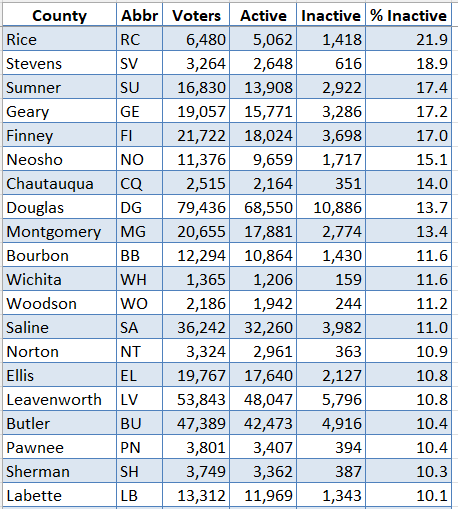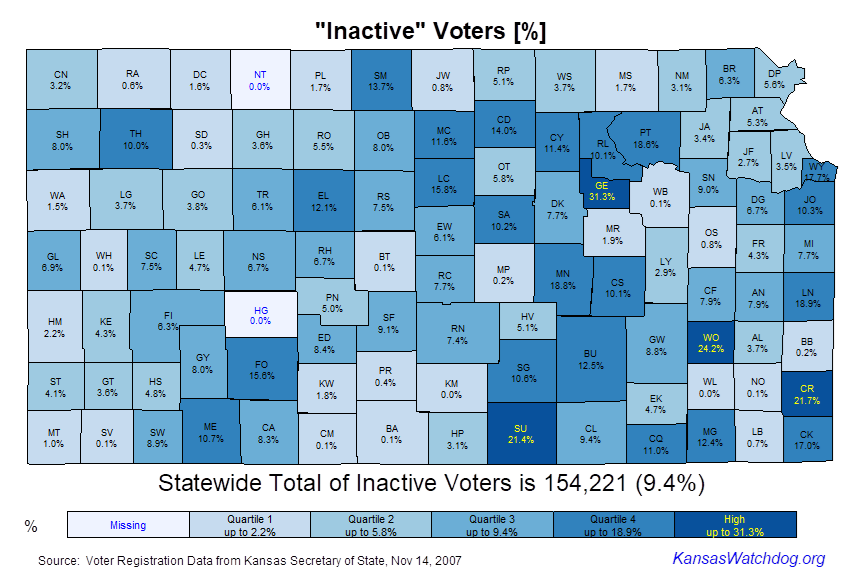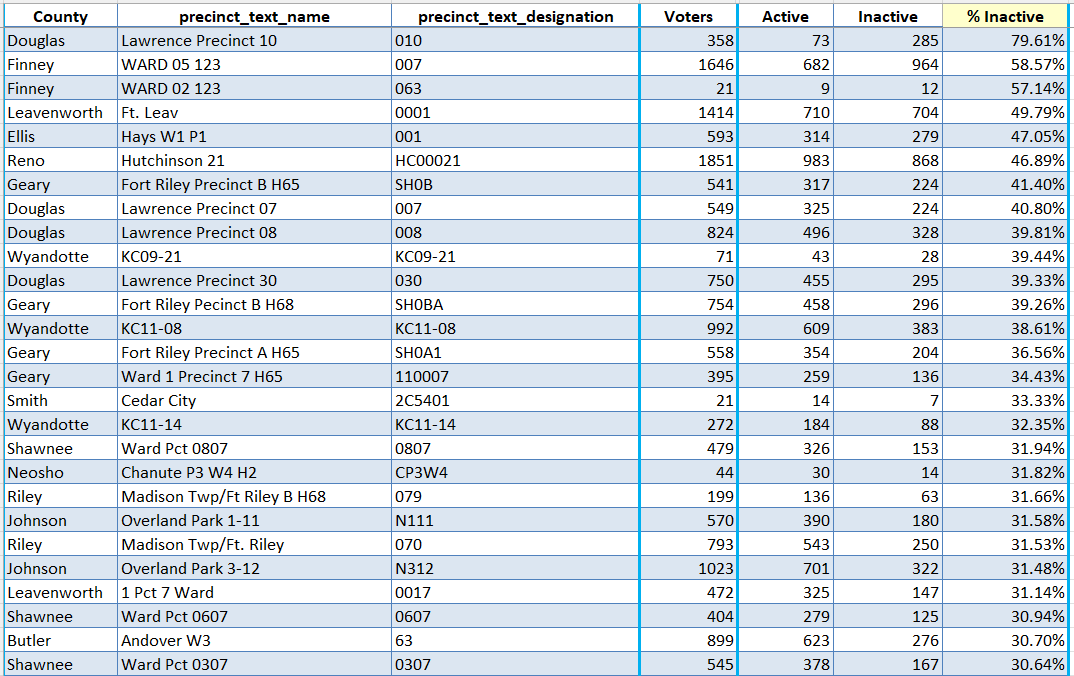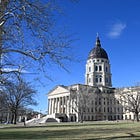Kansas has over 140,000 "inactive" voters
Most inactive voters have unknown or invalid street addresses
One precinct of 358 voters in Lawrence near the KU campus has nearly 80% inactive voters. The second largest precinct in Garden City with 1646 voters has nearly 60% inactive voters. What does this mean?
Election offices mark a voter as “inactive” when mail cannot be delivered. This is discovered by an election office sending mail to a voter, which is returned undeliverable by the post office, or by a check with the post office’s National Change of Address database that says the voter has moved.
A few voters receive an “inactive” status for not showing up to vote over several election cycles, but most “inactive” voters have unknown or invalid addresses.
The voter status name should be changed to “valid address” or “invalid address” to reflect what is known about a voter. Perhaps more would be concerned with voters with invalid addresses than voters that are tagged as “inactive.”
Voter List Maintenance
The US Election Assistance Commission published a guide: Best Practices: Voter List Maintenance. This guide explains when a voter can be removed from the list once they have been marked “inactive”:
A voter may be moved from an inactive to a cancelled list of voters if no voter activity occurs for a period of two federal general elections.
Note the word “may” in the above statement. It does not say “must” and it does not say “when.”
There is little or no uniformity among the 105 Kansas county clerks and election commissioners in how and when they perform voter list maintenance.
There are huge differences across the state in voter list maintenance as measured by the percentage of inactive voters.
Statewide “Inactive” Map
The rate of inactive voters by county was measured using a voter file from the Secretary of State on Jan. 3, 2024. The map below shows the wide variation across the state.
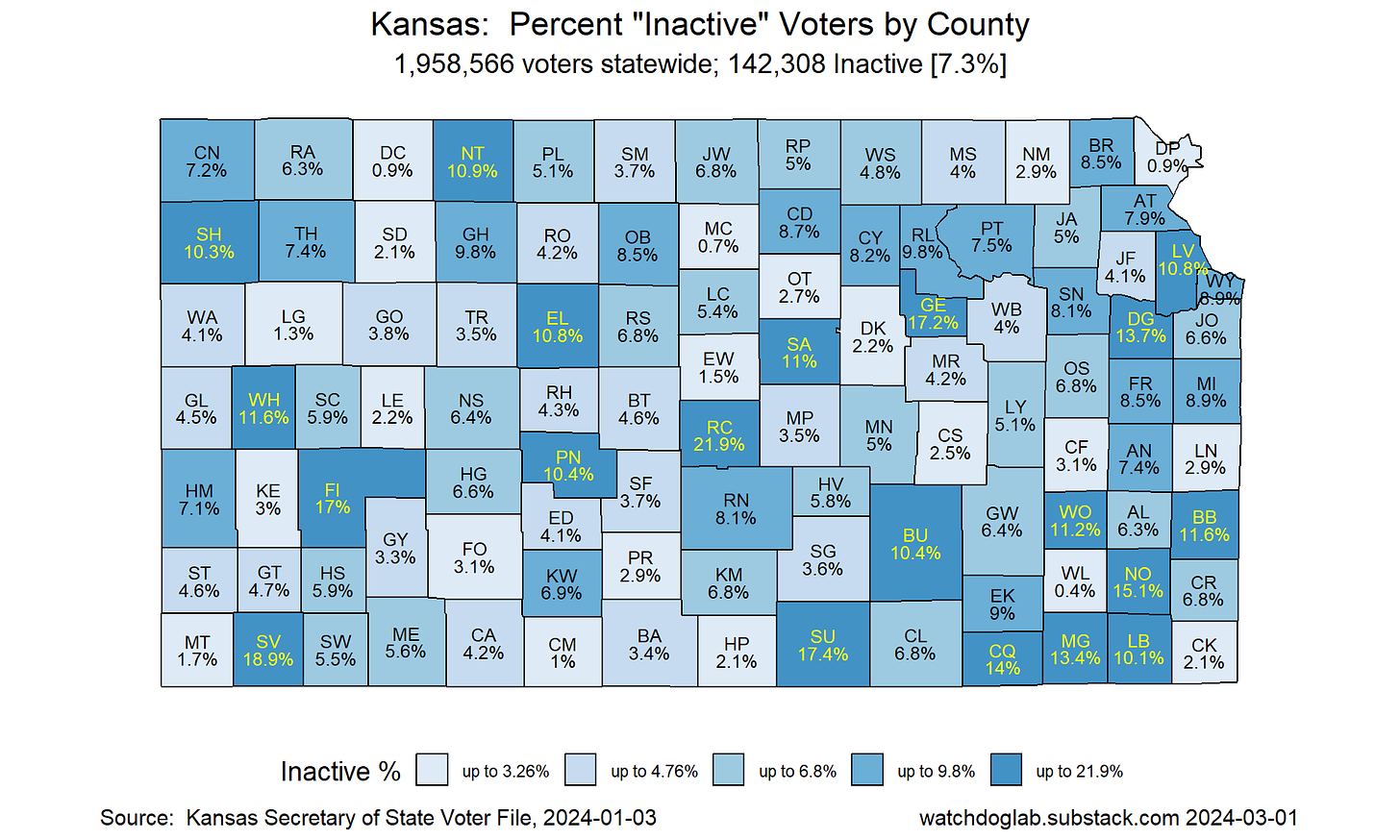
Inactive rates that are too high — or too low — might be an indication that a voter list is not being routinely maintained.
High inactive rates might be an indication that voters are being marked as “inactive” but no list maintenance is occurring to remove them.
Breaking inactive rates into five quintiles is a good approach — this breaks the counties into five sets based on their inactive rates: Lowest, Low, Middle, High, Highest. Normally, the Lowest and Highest deserve additional scrutiny.
Counties by the numbers …
Highest inactive rates (10% or higher)
This quintile shows the highest inactive rates among counties. At present this includes counties with 10% or higher inactive rates.
Citizens should ask election officials in these counties about the frequency of their list maintenance. When was list maintenance last run to purge inactive voters?
Lowest inactive rates (3.3% or lower)
This quintile shows counties with low rates of inactive voters.
These low numbers can be “OK” but it could be an indication that voters are not being tagged as “inactive” to start the removal process. If a low number persists over many months, it may reflect some sort of maintenance problem.
Citizens should ask election officials in these counties if voters are being tagged as “inactive” appropriately.
Comparison to 2007
In Nov. 2007 — about a year before the 2008 presidential election — Kansas had about 9.4% inactive voters, which is over 2% higher than the rate from Jan. 2024.
While overall there has been a good improvement stateside, three of the four counties from 2007 in the highest quintile of inactive voters are still in the highest quintile in 2024: Geary, Sumner and Woodson. Since 2007 Crawford County is no longer in this highest quintile.
These numbers can ebb and flow over time, so a time series over several years is a better way to look at this data. A dashboard updated by the Secretary of State every month would be a great way to monitor this problem.
Precincts by the numbers …
List maintenance by the counties in the middle three quintiles is probably “OK,” but noticeable problems can still be found in certain precincts.
The Jan. 3, 2024 voter file can be broken into 4074 precincts with 1 to 6007 voters.
[Note the names of precincts in the Kansas voter files often do not match exactly the precinct names given with election results. Someday the census VTD (voter district) used in election results should also be included in voter files. This has been a problem since 2006 when the first statewide voter files were introduced.]
Many Kansas precincts are quite small. To avoid “noisy” statistics with small numbers, let’s focus only on the 3743 precincts with 20 or more voters.
Precincts with high inactive rates often occur in places with transient populations, such as college campuses or military bases (Ft. Riley and Ft. Leavenworth).
One precinct of 358 voters in Lawrence near the KU campus has nearly 80% inactive voters. Why can’t the Douglas county clerk take extra measures to identify students who have moved away near campus?
The second largest precinct in Garden City with 1646 voters has nearly 60% inactive voters. Perhaps this is due to a transient population working at the meatpacking plants there?
Study the inactive rates in all precincts in this Excel file.
Data
Contact me if you are interested in studying inactive voters in your precinct or county.
Related
2010
126,000 voters with unknown or invalid mailing addresses in Kansas, Kansas Watchdog, July 31, 2010, via Wayback Machine link.
Analysis from past years suggests that less than 1 percent of inactive voters normally vote in an August Primary, but about 10 percent vote in a November General election. This means that about 100 “inactive” voters may be casting ballots in each state representative election in a November general election but may not live at their last known mailing address in the district.
We asked election officials, Secretary of State candidates and academics for their thoughts about these questions:
See online comments from 4 election officials, 4 candidates, and 3 academics about this issue in 2010.




